
Maya News Updates 2011, No. 13: El Palmar, Campeche - New Hieroglyphic Stairway Tells Story of Local and Pan-Regional Powers
In June of 2009, the archaeological project at El Palmar (Campeche, Mexico) discovered a new hieroglyphic stairway. The project (a collaborative effort between the Instituto Nacional de Antropología e Historia, the University of Arizona, and the Universidad Naciona Autónoma de México) on the hieroglyphic stairway is directed by Kenichiro Tsukamoto and Javier Lopez-Camacho. The hieroglyphic stairway has six steps, which are constructed of 90 stones. These stones contain over 130 hieroglyphic cartouches and tell an intricate story of local and pan-regional powers. Octavio Esparza, the project's epigrapher, has partially deciphered the remaining and legible part of the hieroglyphic stairway. The stairway inscriptions commemorate an event dated probably to 9.14.15.0.0, 11 Ajaw 18 Sak, or September 13, A.D. 726 (correlation constant: 584,285 [Julian]). It provides a list of successive El Palmar rulers, but the most important discovery was the commemoration of a visit of rulers from two major Classic Maya capitals, Calakmul and Copán. Octavio Esparza's decipherment suggests that Calakmul, Copán, and El Palmar were allies in the period just before Calakmul was defeated by Tikal (A.D. 736) and Copán by Quirigua (A.D. 738). The news was reported on April 25, 2011, by the INAH and National Geographic Daily News. National Geographic Society is one of the main sponsors of the project at El Palmar. Below follow the INAH bulletin as well as the NG Daily News edition, providing additional detail on the discovery and theon-going research at the site (edited by MNU; photos: INAH & NGS/Kenichiro Tsukamoto):
 Descubren escalinata con jeroglíficos mayas - Una escalinata con jeroglíficos mayas fue descubierta en la Zona Arqueológica El Palmar, al sureste de Campeche, por un equipo de expertos del Instituto Nacional de Antropología e Historia (INAH-Conaculta) y de las universidades de Arizona, Estados Unidos, y Nacional Autónoma de México; su desciframiento preliminar revela que esta ciudad prehispánica mantuvo contactos con las urbes de Calakmul, ubicada en esa misma entidad, y Copán, en Honduras, hace casi mil 300 años.
Descubren escalinata con jeroglíficos mayas - Una escalinata con jeroglíficos mayas fue descubierta en la Zona Arqueológica El Palmar, al sureste de Campeche, por un equipo de expertos del Instituto Nacional de Antropología e Historia (INAH-Conaculta) y de las universidades de Arizona, Estados Unidos, y Nacional Autónoma de México; su desciframiento preliminar revela que esta ciudad prehispánica mantuvo contactos con las urbes de Calakmul, ubicada en esa misma entidad, y Copán, en Honduras, hace casi mil 300 años.Los responsables de este proyecto arqueológico, Javier López Camacho y Kenichiro Tsukamoto, de la Escuela Nacional de Antropología e Historia (ENAH) y de la Universidad de Arizona, respectivamente, dieron a conocer que la escalinata de seis peldaños conserva 90 bloques con más de 130 cartuchos o conjuntos de jeroglíficos, que hacen referencia a acontecimientos registrados en el periodo Clásico maya (250-900 d.C.).
Destacaron que aunque no se trata de la única escalinata jeroglífica encontrada en las tierras bajas mayas —hasta el momento se tienen reportadas 20—, la de El Palmar se encuentra asociada a la periferia del asentamiento y a estructuras de dimensiones modestas, cuando por lo general estos elementos arquitectónicos se hallan vinculados a edificios monumentales del área central de los sitios.
El reporte de este hallazgo se remite a junio de 2009 como parte de un reconocimiento de superficie que hizo el equipo arqueológico al norte de El Palmar, donde la presencia de un pequeño conjunto de vestigios arqueológicos, al que se nombró Grupo Guzmán, y la evaluación de las piedras in situ, sugirió su posible asociación a una escalera jeroglífica.
La temporada de campo se realizó a fines de 2010 e inicios de 2011 con el financiamiento de la National Geographic Society y la American Philosophical Society, el INAH, la UNAM y la Universidad de Arizona, contando además con el apoyo de expertos de la Coordinación Nacional de Conservación del Patrimonio Cultural del INAH, así como de la delegación del INAH en Campeche, para su preservación.
De acuerdo con los arqueólogos Javier López Camacho y Kenichiro Tsukamoto, los primeros cuatro peldaños presentaban un buen estado de conservación, mientras el quinto y el sexto estaban fragmentados y fue necesario realizar tratamientos de conservación emergente.
Todos los bloques fueron registrados en fotografía, dibujo y ubicación específica con instrumentos topográficos de tecnología láser, antes de ser trasladados al campamento arqueológico como medida de seguridad, ahí, las restauradoras del INAH: Yareli Jáidar, Diana Arano y Leticia Jiménez, determinaron su estado de conservación.
No obstante lo anterior, las coordinaciones nacionales de Arqueología y de Conservación del Patrimonio Cultural, así como el Centro INAH-Campeche, contemplan el diseño de un proyecto más amplio de restauración en un futuro cercano. Actualmente los bloques grabados permanecen en el campamento ubicado en el poblado Kiché Las Pailas, municipio de Calakmul.
El desciframiento de los jeroglíficos - En lo que respecta al desciframiento de las inscripciones glíficas, si bien es todavía preliminar, el epigrafista del proyecto Octavio Esparza Olguín, de la UNAM, señaló que el texto jeroglífico apunta a acontecimientos importantes para comprender la historia del periodo Clásico maya (250-900 d.C.).
 La escalinata jeroglífica del Grupo Guzmán narra —entre otros eventos históricos— la visita de personajes foráneos a El Palmar, posiblemente dignatarios; así mismo, la elaboración del grabado de los escalones está asociada a una rueda calendárica con fecha de 11 Ajaw 18 Sak, que equivaldría al 13 de septiembre de 726 d.C.
La escalinata jeroglífica del Grupo Guzmán narra —entre otros eventos históricos— la visita de personajes foráneos a El Palmar, posiblemente dignatarios; así mismo, la elaboración del grabado de los escalones está asociada a una rueda calendárica con fecha de 11 Ajaw 18 Sak, que equivaldría al 13 de septiembre de 726 d.C.La información contenida en el texto epigráfico también hace referencia a señores del sitio, así como a contactos que mantuvo El Palmar con urbes como Calakmul y Copán, éste último ubicado en los confines sureños del área maya. Es posible que la visita de señores de Calakmul y Copán a El Palmar, se diera una década antes de que estas ciudades fueran derrotadas, respectivamente, por Tikal y Quiriguá (Guatemala), entre 736 y 738 d.C.
Otros hallazgos asociados - La escalinata jeroglífica hallada forma parte de un basamento simple que mide 10 por 10 m, y 3 m de altura, el cual fue acondicionado para soportar un edificio abovedado al que se accede precisamente por esta escalera que se ubica en su costado poniente. Los trabajos para liberar y consolidar esta estructura estuvieron a cargo de la arqueóloga Luz Evelia Campaña.
La excavación fue extensiva y también abarcó un cuarto que está en la parte superior y el basamento de la estructura. En el edificio se identificaron dos banquetas en los extremos y, sobre su piso —que muestra huellas de haber sido quemado, posible evidencia de un ritual— se registraron fragmentos de cerámica.
Además, al excavar dentro del cuarto se encontró un entierro con ofrenda, contemporáneo a la construcción de la escalera, el análisis estratigráfico estableció que data del siglo VIII d.C.
El entierro está compuesto por restos óseos humanos erosionados, dos vasijas policromas y huesos. El análisis preliminar —realizado por la antropóloga física Jessica Cerezo-Román, de la Universidad de Arizona— sugiere que corresponde a un individuo masculino de alto rango, esto a juzgar por las características de su mandíbula y la incrustación de jade en los dientes incisivos.
A su vez, los materiales cerámicos y líticos son estudiados en el Laboratorio de Estudios Mayas de la ENAH, y en el Laboratorio de Suelos y Sedimentos de esta escuela. Mientras que el biólogo Serafín Sánchez Pérez analiza evidencias de actividades humanas plasmadas en los pisos quemados.
Por otra parte, el doctor José Luis Ruvalcaba, del Instituto de Física de la UNAM, efectúa el análisis de piezas de obsidianas por medio de la emisión de rayos X inducida por partículas (PIXE, por sus siglas en inglés), a fin de establecer su procedencia. El fechamiento por carbono 14 y el análisis petrográfico (del tipo de roca) se llevan a cabo en la Universidad de Arizona, para confirmar con precisión las fechas inscritas y determinar las huellas presentes en los artefactos. (Source INAH)
The Meaning of Words: New Evidence of Ancient Maya History - The ancient Maya culture flourished in Mesoamerica. At the height of their splendor there’s an overwhelming rise in architectural construction, the type of buildings that pay homage to their rulers and their ancestors. Archaeologists call this phenomenon the Classic Maya Period, a time between 200 and 900 A.D. Within these centuries, archaeologists have found evidence that city-states expressed their power by creating unique architectural centers that in many ways were meant to replicate their cosmology. Perhaps the most important social act for a new king was to establish their relationship with the founder of the lineage and they did so by sponsoring magnificent works of art.
Our fascination with the Maya is credited to John Lloyd Stephens, a New York Lawyer who travelled to the Yucatan and Central America in the 1840s, and Frederick Catherwood, an Englishman whose mission was to visually document the journey, a talent that has inspired many of us in becoming archaeologists.
Along with multi-leveled stepped pyramids, ball courts, plazas and freestanding monuments called Stelae, the Maya also literally told the stories of their parents, ancestors, founders, foes, captured enemies and military alliances. Maya writing is a unique feature of this culture that along with the perfection of their calendar has intrigued and mystified the world. Their texts are expressions of a ruling class, however, the question remains, are we reading history, political propaganda or both?
New Hieroglyphic Stairway Found - It is not often that a young archaeologist stumbles upon a spectacular find. Kenichiro Tsukamoto, a young Japanese archaeologist and Ph.D. candidate at the University of Arizona, has found a “mountain” of texts in a recently discovered hieroglyphic stairway at the site of El Palmar in Campeche, Mexico. Funded in part by the National Geographic Society/Waitt Grants Program, Kenichiro and his co-director Javier Lopez-Camacho have been focusing on retrieving ancient history by exploring and preserving the Guzmán hieroglyphic stairway at El Palmar. It is not an easy task since the recovery of these texts includes the important work of conservation efforts by their team who includes: Luz Evelia Campaña, Octavio Esparza, Hirokazu Kotegawa, and Vania Pérez. The exciting team of archaeologists, epigraphers and conservators together with the National Institute of Anthropology and History of Mexico [INAH] are studying, preserving and protecting this unique cultural patrimony.
Typically, hieroglyphic stairways are part of the central or core elements of the elite ruling class, however, this was not the case at El Palmar because the building was located on the outskirts of the site, away from the center. The location of the stairway perplexed Javier: “For me, the discovery of the hieroglyphic stairway at El Palmar was a great surprise. When Kenichiro notified me of the architectural group away from the central zone, I assumed that it would be similar to El Resbalon in Quintana Roo, where Post-Classic inhabitants reused the abandoned city, taking apart the hieroglyphic stairway and using the carved blocks for new constructions, placing them out of order in other parts of the city”.
What Javier is referring to is yet another complex part of ancient Maya history. After the Classic period, there is a regional hiatus in writing, commemorative dates and construction. This initially led to the notion of the Maya “Collapse”. A term that has created more confusion than clarification since it implies the disappearance of a culture, but the Maya people never disappeared, and the term rather addresses a dissolution of government and society. Although we still don’t know much about the causes of the “collapse”, the following Post-Classic period, dated between 900-1200 A.D., was a time of major change. Many of the cities that were abandoned at the end of the Classic were re-occupied. Old palaces and sacred temples were used by newcomers, in many cases, they would re-utilize carved stones in new constructions, adding more confusion to modern archaeologists trying to “read” texts taken out of their original context.
The uniqueness of the Guzmán stairway is that it lies in the periphery of the main architectural group, since most hieroglyphic stairways have been found at the heart of major Classic Maya cities. Furthermore these stairways are associated with monumental structures surrounding huge plazas, but the Guzmán stairway was discovered in the smallest architectural group of the ancient city. It clearly was not a Post-Classic building and so we are looking at a new type of Maya sacred space, one that has not been previously documented and which may shed light into their history. At present, there are only about 20 other centers with hieroglyphic stairways in the Maya region, most of them have suffered changes through time, re-occupation, re-use of materials, and are difficult to read. In this regard the Guzmán group is not only unique, but also important in revealing new information on Maya society.
How was the Guzman Hieroglyphic Stairway Discovered? - A local informant discovered the Guzmán hieroglyphic stairway. Kenichiro recalls that “During the 2009 fieldwork season at the Main Group, one of our local workers, Mr. Gudiel Guzmán, told me that he had found two small carved stones while conducting slash and burn agriculture on his private land. Octavio, the project epigrapher, and I visited Mr. Guzmán´s land together. After a careful evaluation of these blocks, we realized that these were pieces of a hieroglyphic stairway”.
Despite the fact that most of the hieroglyphic stairway was still covered with debris and soil, Kenichiro and his team realized the stairway remnants were close to the surface, making these remarkable inscriptions highly vulnerable to looting. Therefore, a salvage excavation was extremely urgent.
“In the following 2010-11 field season, our project focus changed from the main group to the exploration and rescue of the Guzmán hieroglyphic stairway. The National Geographic Society, the American Philosophical Society, the University of Arizona, the Campeche INAH Center, and the National School of Anthropology and History, Mexico [ENAH], supported our project, under a permit provided by the National Institute of Anthropology and History [INAH]” Kenichiro said in a recent interview.
The excavation project that was soon to follow was no easy task. It required experienced archaeologists like Luz Evelia, whose previous works at the Sites of Dzibanche and Becán was essential to the success of the research. Their first task was to remove the overgrown jungle from the stairway and then to carefully excavate the monument without causing any damage to the fragile texts. Loosing a block could mean erasing part of history. What many don’t realize is that after the blocks are documented they need to be cared for by a team of conservators. At El Palmar, the conservation team included: Yareli Jáidar Benavides, from the National Coordination of Conservation of Cultural Heritage (CNCPC) of INAH, Diana Arano Recio and Leticia Jiménez Hernández from the Campeche INAH Center. It was the Institutional collaboration from the Director of the Campeche INAH Center, Lirio Guadalupe Suarez that provided the staff, lab, time and effort in preserving this spectacular find.
What We Know So Far - Much more time is needed to decipher the hieroglyphic stairway. However, so far the data recovered and the texts suggest a very intriguing story. The pyramidal structure that holds the stairway was built between the 7th and 8th Centuries A.D. and a few decades after its construction a total of 90 blocks containing Maya glyphs were added, creating a stairway of six steps leading to a temple on top of the pyramid.
 Octavio (MNU: in the photograph, here above) has partially deciphered the stairway inscriptions that commemorate an event dated probably to September 13, A.D. 726 [9.14.15.0.0 11 Ajaw 18 Sak], and provide a list of successive El Palmar rulers. Of the most exciting finds was that the hieroglyphic stairway commemorated the visit of rulers from two major Classic Maya capitals: Calakmul and Copán. “Octavio´s decipherment suggests that Calakmul, Copán, and El Palmar were allies in the period just before Calakmul was defeated by Tikal [A.D. 736] and Copán by Quirigua” Kenichiro said in an interview.
Octavio (MNU: in the photograph, here above) has partially deciphered the stairway inscriptions that commemorate an event dated probably to September 13, A.D. 726 [9.14.15.0.0 11 Ajaw 18 Sak], and provide a list of successive El Palmar rulers. Of the most exciting finds was that the hieroglyphic stairway commemorated the visit of rulers from two major Classic Maya capitals: Calakmul and Copán. “Octavio´s decipherment suggests that Calakmul, Copán, and El Palmar were allies in the period just before Calakmul was defeated by Tikal [A.D. 736] and Copán by Quirigua” Kenichiro said in an interview. Apart from the importance of the hieroglyphic stairway, a few deposits were found that included a concentration of broken vessels purposely deposited on a heavily burned plaster floor in the main temple, presumable a ritual activity. Furthermore, a burial containing one individual and two polychrome vessels were also found during the excavation. The individual is an adult male whose front teeth contained incrusted small circular jade inlays, a sign of high status among the Maya. Jessica Cerezo-Román, the project physical anthropologist, will conduct osteological analysis to provide more information on this enigmatic person.
Apart from the importance of the hieroglyphic stairway, a few deposits were found that included a concentration of broken vessels purposely deposited on a heavily burned plaster floor in the main temple, presumable a ritual activity. Furthermore, a burial containing one individual and two polychrome vessels were also found during the excavation. The individual is an adult male whose front teeth contained incrusted small circular jade inlays, a sign of high status among the Maya. Jessica Cerezo-Román, the project physical anthropologist, will conduct osteological analysis to provide more information on this enigmatic person.[...]
The Archaeological Significance of the Discovery - Archaeologists like Kenichiro and his team study specific scientific questions about cultures rather than focus on finding spectacular sites or artifacts. But unexpected discoveries sometimes change lives.
“In my career as a Maya archaeologist, I realized that there was very little chance of discovering a hieroglyphic stairway. While over five thousand Maya archaeological sites have been reported, only about 20 hieroglyphic stairways have been uncovered until now. Furthermore, few of them have survived from looting or natural transformations. When we found two blocks of the stairway, I was too skeptical to accept our incredible discovery. However, once Octavio and I confirmed that most blocks of the Guzmán hieroglyphic stairway were preserved in their original positions and there were over 130 glyphs, I felt that my archaeological life would change” Kenichiro told us in an interview.
A Multidisciplinary Approach - The El Palmar Archaeological Project in collaboration with the University of Arizona, ENAH, INAH, and the Campeche INAH center, will continue further research. The international and multidisciplinary team has plans to conduct one or two more field seasons at the Guzmán group in order to better understand the social role of this small architectural group at El Palmar. Likewise, in collaboration with the National Coordination of Conservation of Cultural Heritage (CNCP) of INAH and the Campeche INAH Center, they plan to continue the restoration of hieroglyphic blocks. Moreover, they will analyze all materials recovered from this excavation, carry out C14 dating, conduct petrographic analysis, and spatial analysis through Geographic Information System [GIS]. In additional to these efforts, Dr. Jose Luis Ruvalcaba from the Institute of Physics, National Autonomous University of Mexico, is conducting the provenience analysis of obsidians through Pronton Induced X-ray Emission which will allow us to better understand the relationship between El Palmar, Tikal, and Copán. Furthermore, biologist Serafin Sanchez from the laboratory of soil and sediment at ENAH, is studying the room and associated activities of the hieroglyphic stairway through the chemical analysis of the plaster floor.
The El Palmar Archaeological Project could not have carried out this research without the help of INAH, especially Dr. Nelly Margarita Robles, President of Archaeological Council; Salvador Guilliem Arroyo, National Archaeological Coordinator; Lilia Rivero Weber and Rogelio Chong, Director and sub-Director of the Natinoal Coordination of Conservation of Cultural Heritage [CNCPC-INAH], repectively, and Roberto García Moll and Laura Pescador Cantón.
Kenichiro’s further work at the Guzman group may hold many clues to the final days of the Classic Maya period, specifically to the fragmentation of the society, government, alliances and warfare. We look forward to the decipherment of the hieroglyphic stairway and to the preservation and protection of this enigmatic Maya site and its history. To learn more about the Maya and Mesoamerican cultures, please visit the Foundation for the Advancement of Mesoamerican Studies. [...]. (Source National Geographic Daily News)






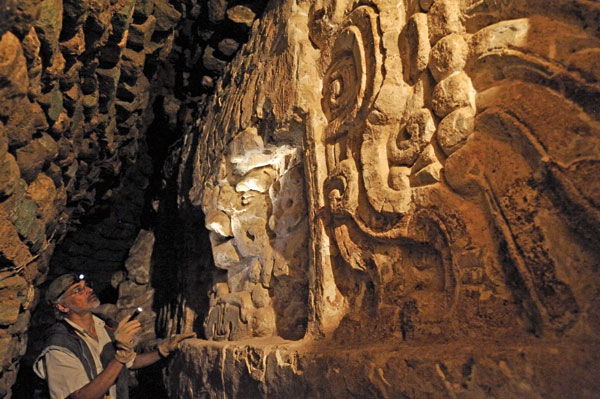
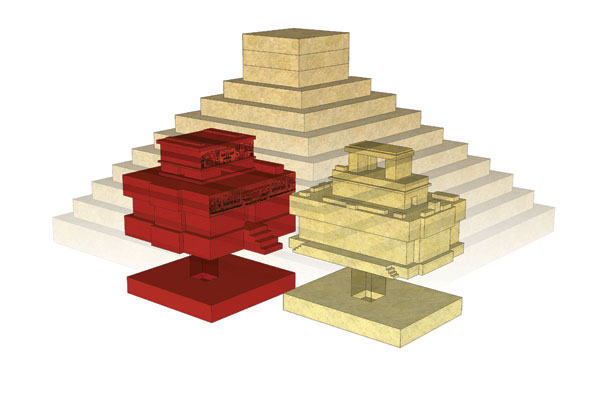
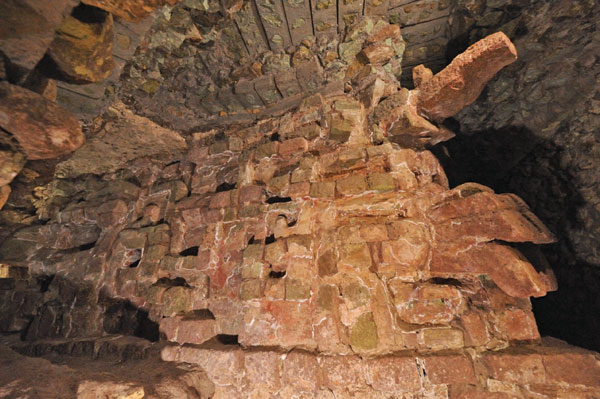





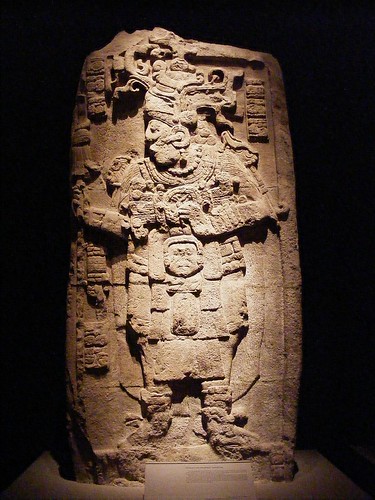


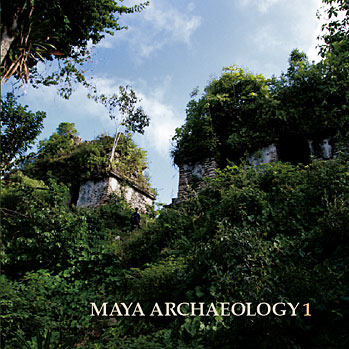









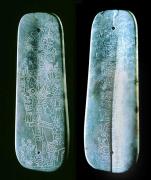
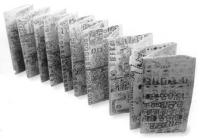

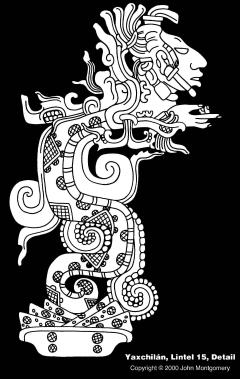

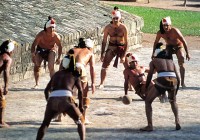


0 Comments:
Post a Comment
<< Home